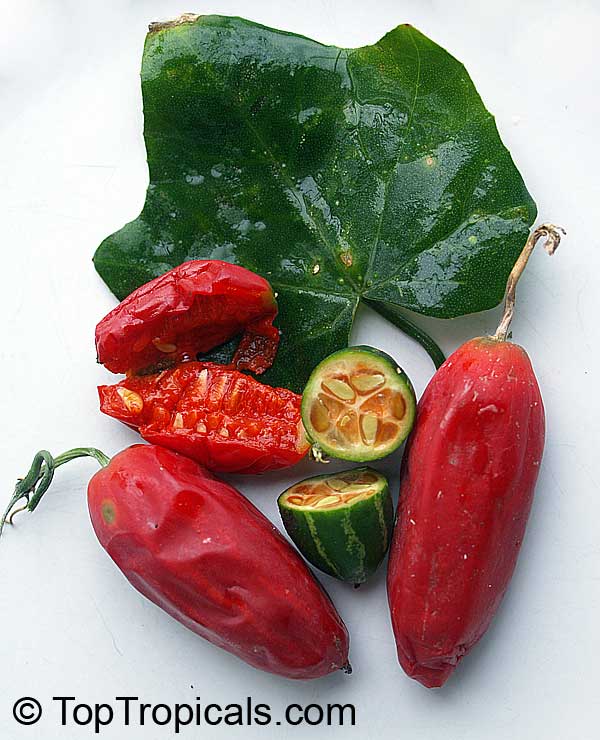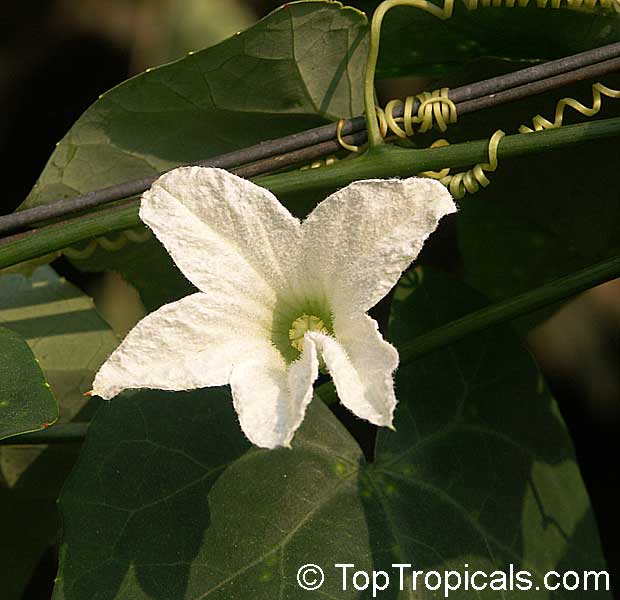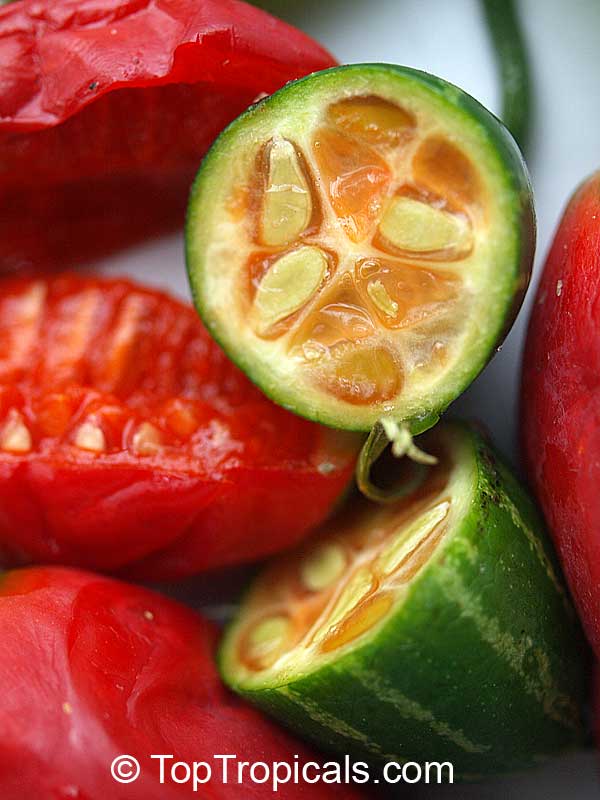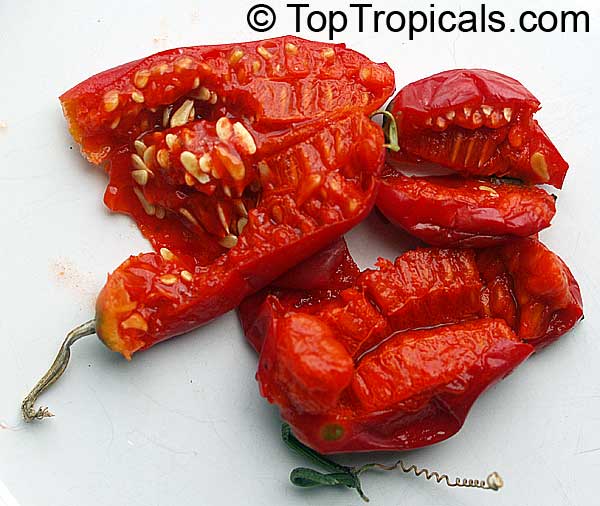Coccinia grandis (Ivy Gourd)
Top Tropicals Plant Encyclopedia
Botanical name: Coccinia grandis
Common names: Ivy Gourd, Scarlet Gourd, Tindora
Family: Cucurbitaceae
Origin: Africa, Asia and Australia








Native to Africa, Asia and Australia, Coccinia grandis (Ivy Gourd) is an attractive yet invasive vine or creeper that's also known for its ethnomedical properties. It grows well in full sun to semi-shade and requires moderate watering on a regular basis. It is cultivated in USDA Hardiness Zones 9-11 and blooms from the beginning of summer to the middle of autumn.
In addition to its beauty and ethnomedical functions, Coccinia grandis is also an edible fruit that is sweet and sour in taste. Rich in vitamins, minerals, and antioxidants, Ivy Gourd can be used for consuming either raw as a salad or for making jams, juices, and sauces. It is believed to have several health benefits such as improving digestion, regulating blood sugar levels and even reducing chronic pain. In some parts of India, this plant is used to treat common colds, fever, bruises, and so on.
Coccinia grandis can produce a good amount of fruits during the season. Usually, they start to appear in late summer and autumn. The diet should be balanced when consuming Ivy Gourd fruit as it tends to be a heavyweight food item.
When it comes to caring for the plant, Ivy Gourd does not require much attention and can even be grown in a pot if preferred. It should be watered moderately and the soil should not be allowed to dry out. For cold climates, it should be covered with straw mulch to ensure insulation during winter. Winter protection may be needed in USDA Hardiness Zones lower than 9.
Similar plants: Coccinia grandis (Ivy Gourd)
Nothing found





